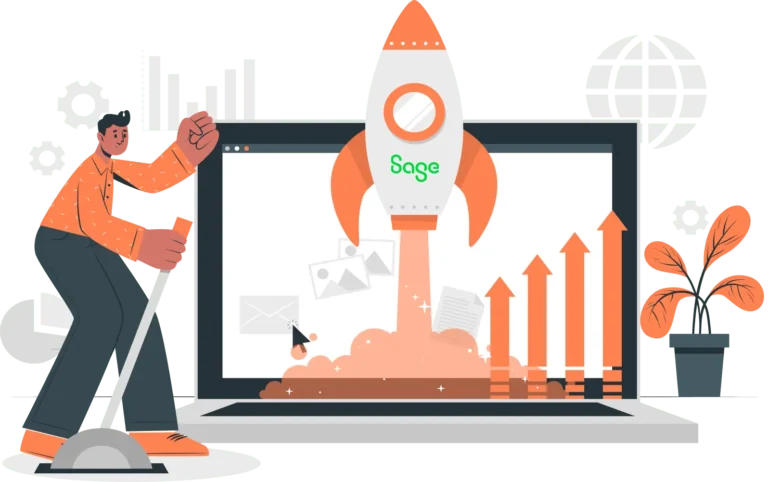- Solutions
-
-

Solutions
Perfect eCommerce solutions for any business. We provide customized solutions for B2B and B2C businesses across multiple industries.
Learn more
-
-
- Products
-
-

Products
Streamline backend operations, improve inventory management, and more with our business management software.
Learn morePLATFORM
-
-
- Services
-
-

Services
We go beyond software to provide the customizations, services, and support your business needs.
Learn more
-
-
- Industries
-
-

Industries
Business management software tailored to meet the needs of specific industries, including industry-specific regulations.
Learn moreINDUSTRIES
-
-
- Resources
-
-

Resources
Learn more about business management software and the latest developments in the industry.
Learn more
-
-

October 18, 2019
What is Headless Commerce?
Why is it just popping up now? For centuries, the only way to purchase something was to interact with another person. While supply chain developments and industrial revolutions changed the behind-the-scenes process for making a purchase, for consumers the experience remained largely the same.
The technological revolution has changed how consumers engage with companies, finally leading to the development of headless commerce. eCommerce, which still caters towards people shopping from a desktop rather than a mobile device, leaves many gaps between what consumers want and what companies provide.
This is where headless commerce comes in. Headless commerce is the reimagining of a commerce platform that cultivates interdependent services to support commerce. eCommerce has long remained a problem with a single solution, an eCommerce platform. Occasionally, companies would also bring in other tools to make managing resources, handling big data, or interacting with consumers easier.

What is Headless Architecture?
Headless architecture is the new approach to site infrastructure. It creates a joint between the content management system, or CMS, and the user experience. Essentially, the developer will decouple the CMS and use it only for administrative tools, editorial tasks, and, of course, content management. The user experience will rely entirely on a different component that will go through a web API to communicate with the CMS.
Headless architecture involves a complete overhaul of your website’s infrastructure. Technically referred to as a decoupled CMS, headless is gaining popularity as it promises to free developers and increase innovation.
Basically, headless architecture makes the user-experience the browser’s job. The effect is a streamlined back-end and a web application that prioritizes delivering responsive content.
In order to create a truly headless site, the company must not only manage the backend, which is about content creation and delivery. You will also need to work with content creation, inventory management and procurement.
The ultimate goal is to create an interactive experience. Users continue to expect more and more from commerce sites. eCommerce in relation to portals has been a hot topic for a while, and headless architecture will be another way that businesses can impact the user experience.
You can learn more about eCommerce and portals from eCommerce professionals here!
Potential Pitfalls of Going Headless
While headless commerce might seem like a perfect solution, it comes with drawbacks. Fortunately, there’s a solution for each one.
A few major companies have used headless architecture for a while, and WordPress is transitioning to this model as well.

A Need for Technical Prowess
The most significant issue that comes up when transitioning to headless commerce is the need for advanced technical capabilities. While traditional web frameworks came with support and communities to help, CMS platforms rely on front-end developers for presentation and on the traditional CMS framework for everything else. Businesses will need a team of developers or a very skilled person to handle moving their site to a headless format.
Small businesses likely won’t have the budget to pull off this transition. For small companies with little incentive to grow, a traditional coupled CMS is probably the best option.
Solution
What should a business do if you lack the technical prowess necessary to switch to a decoupled CMS? Like most technological solutions, outsourcing may be required. Outsourcing allows companies to reduce the strain on their current developers, and spare them the stress of having to innovate overnight.
Additionally, your developers can focus on other aspects of the transition while the outside team can handle the technical side. Huge payoffs here include accessing new tech trends such as progressive web apps.
Size and Scale
Accounting for size and scale can determine whether it is feasible for your business to make the transition to a decoupled CMS. Your company may not be there yet, or you may have invested in tools that can’t scale to the demands of headless commerce.
You need the ability to support and fund an omnichannel strategy. Some businesses will do better if they focus on outperforming their competition in specific channels rather than transitioning into headless commerce.
Solution
Even if you’re a small company, you can take steps now that will make headless commerce possible in the future. Give priority to technology that scales easily and quickly.
For example, if you’re using Shopify, you will find that there is a limit to how much your company can grow. At that time, you’ll have to find another eCommerce platform. Options such as Magento allow small businesses to invest in size-appropriate packages with limited tools and then grow into full-service packages.
Additionally, you’ll need a platform that offers a massive variety of integrations or extensions. The more options you have for integrations, the more likely it is that you’ll find the software you enjoy that works with your system.
Keep in mind that headless commerce options use a logic base for core operations systems, which means that integrated software can significantly impact your user’s experiences.
Essential Aspects to Consider Before Making the change
If you’re looking to scale quickly or want to tap into eCommerce trends such as dash buttons or access the Internet of Things as a commerce entity, then headless commerce is right for you. You can work to connect and orchestrate many processes; however; it does take a substantial amount of time and effort.
First, consider your current eCommerce platform. As mentioned before if you’re working with an easy-to-use but hard to scale option like Shopify, you might need to consider migrating.
You can access a guide to migrating to Magento here. But carefully weigh that decision and speak with a few professionals about what you hope to gain from the migration.
Second, carefully evaluate which tools you want to lock-in and how reliable they will be in the years to come. Extensions and integrated software will need to have access to continued support as well.
Finally, find a community. Because headless commerce is so new, it’s vital that you have a group to a resource. Decoupled CMS comes with so many benefits because it doesn’t have the support of a traditional CMS framework.

Is this the Future of Commerce?
Magento, taking the lead from Adobe, is working hard to embrace changes in their market. With Magento 2.3 there’s now a headless version where merchants can connect their front-end straight into the Magento platform. Because it integrates with various software so readily and brings in substantial scalability, Magento could make headless commerce possible. As the second most popular eCommerce platform, Magento’s adaption to headless commerce can have a meaningful impact on the success of the decoupled CMS concept.
Headless commerce wants the flexibility, scalability, and functionality of an eCommerce platform that has all the bells and whistles. Does it seem like too much to hope for, even in this modern age?
Learn what Magento options fit best with your company. Contact Certipro Solutions for a consultation on migration, integration, and business intelligence from a Magento Technology Partner.
Send us a message
Please fill out the form below and one of our associates will contact you shortly.
Training and optimization available for current Sage software

